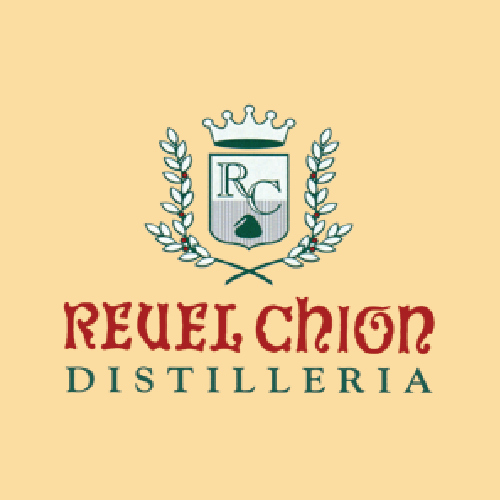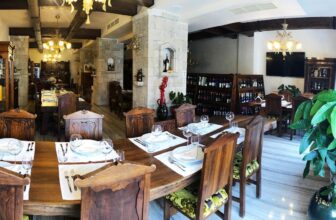UNA STORIA CENTENARIA
Correva l’anno 1850 e, secondo una convenzione mai formalizzata ma sempre più condivisa, la grappa compiva il 449° compleanno. Sempre nel 1850, il pignolo Servizio di Pesi e Misure della Provincia d’Ivrea redigeva un elenco degli utenti soggetti alla verifica periodica nel quale iscriveva, al numero 53, Battista Revel Chion attribuendogli, in quanto esercente di attività prevalente, la qualifica di distillatore.
Come la nascita della grappa è sicuramente anteriore al 1451 – ma si prende tale anno come dato ufficiale in quanto esiste un documento notarile – così la distilleria Revel Chion faceva forse fumare gli alambicchi già parecchio tempo prima, ma il più antico documento con data certa è quello citato.
Un altro, più giovane, ma non meno importante, risale al 1901 quando Bernardo Revel Chion, figlio di Giuseppe, ricevette dal sindaco di Chiaverano la polizza relativa ad un aumento di cauzione per il magazzino fiduciario annesso alla distilleria.
Aspetto: Ambrato.
Sensazioni olfattive: Fine e con sentori di frutta, esprime una delicata nota di tabacco e cuoio che identifica la grande personalità del distillato.
L’origine della Revel Chion non è comunque molto distante dalla fondazione della cooperazione di acquavitai costituita in Piemonte agli inizi del ‘700 sotto il regno di Vittorio Amedeo II di Savoia. La prova è data dalla citazione dell’attuale Presidente della distilleria, Alessandro Revel Chion, nato nella seconda metà del XVIII secolo, quale detentore di un alambicco.
Il Regno Sabaudo era uno stato ordinato e, soprattutto in fatto di acquavite, censiva meticolosamente, non senza fini di lucro, ogni fonte produttiva.
Nella sola Chiaverano, in quel 1848 passato dalla storia a fama proverbiale per i noti sommovimenti socio-politici, vennero contati venti alambicchi, saliti poi a trentuno nel 1885.
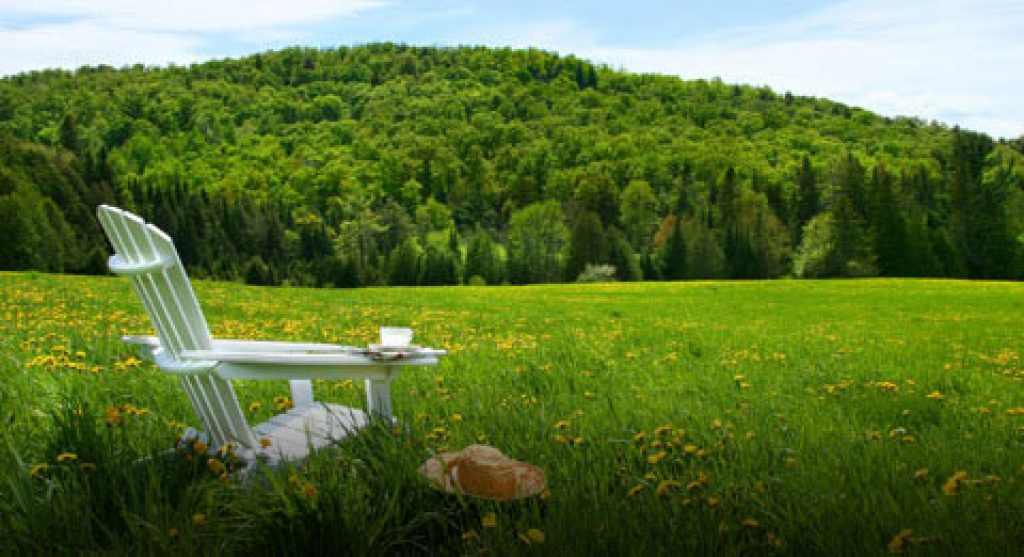
Erano sicuramente piccoli e per lo più a fuoco diretto se, tutti insieme, riuscivano a dare appena due mila litri di acquavite tassabile.
Ma costituivano il riflesso di un importante fenomeno agrario che aveva cambiato il volto della zona.
A partire dal 1700 nel Canavesano si innesca infatti un vistoso fenomeno che porta il vigneto a rubare la terra ai secolari boschi della Serra d’Ivrea.
Con fatiche immani si procede a terrazzare i declivi per renderli più facilmente coltivabili e la vite diventa la vera ricchezza del comprensorio.
A dimostrazione del fatto basta considerare le norme disciplinari che si susseguono, quasi senza soluzione di continuità, per creare un monito ben sanzionato a chiunque attenti l’integrità del vigneto, sia sotto il profilo strutturale che sotto quello furtaiolo dei preziosi grappoli d’uva.
E, dove c’è la vigna, si sa, arriva anche l’alambicco per consentire l’esaurimento della frazione alcolica presente nelle bucce degli acini d’uva al termine della fermentazione alcolica e dei sedimenti lasciati dal vino dopo i travasi.
Nei secoli scorsi gli alambicchi funzionavano forse più su questi ultimi che non sulle vinacce: esse infatti, una volta separato il vino, venivano aggiunte di acqua per preparare i vinelli e quindi, non di rado, erano così povere da non meritare l’uso della legna occorrente per la distillazione.
Man mano cresceva la vigna il contadino si trasformava in vitivinicoltore per poi specializzarsi, in qualche caso, nell’arte del lambiccare.
La distilleria Revel Chion nasce dunque dalla terra e dal lavoro di sette generazioni che, senza mai abbandonare Chiaverano, hanno via via adeguato l’azienda alle esigenze del momento senza mai tradire le origini e le tradizioni.
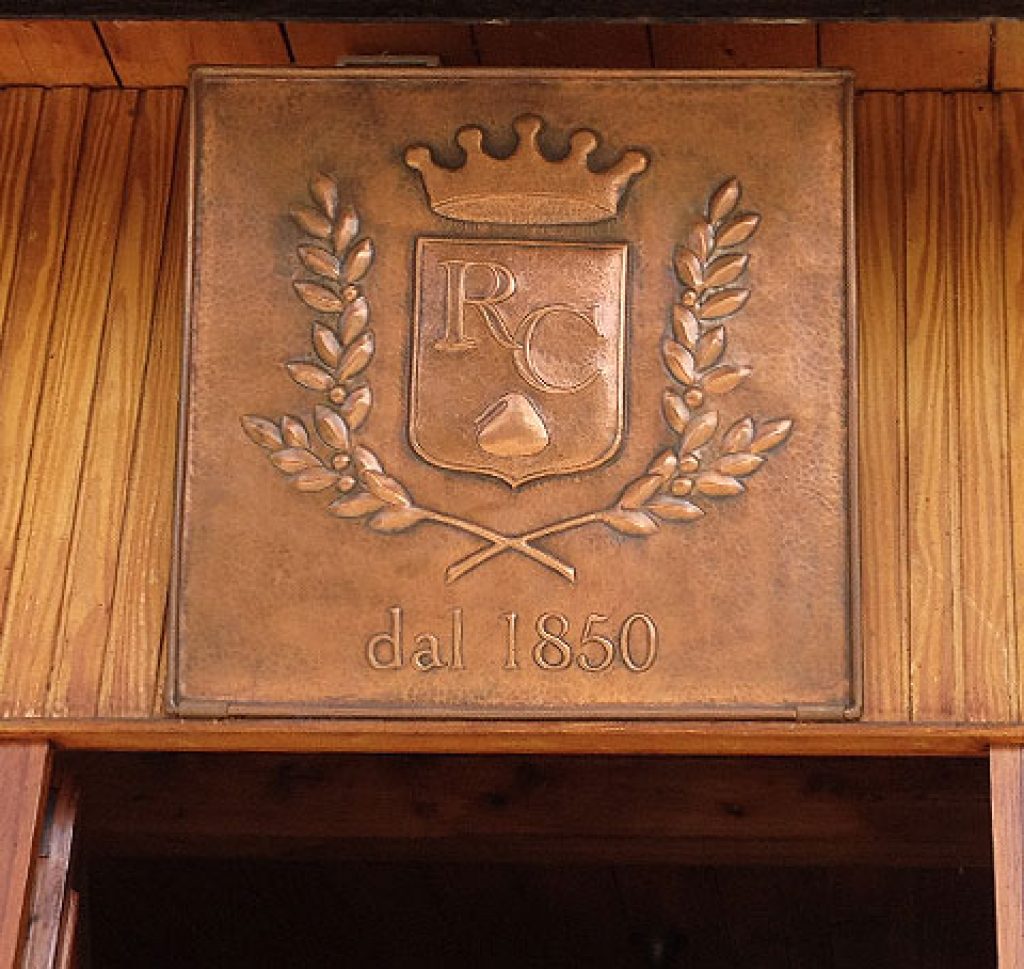
ERBALUCE
Albaluce, la ninfa figlia del sole e dell’alba, commossa per l’affetto che le dimostravano gli abitanti della zona di Caluso, una cittadina non distante da Ivrea, non riuscì a trattenere le lacrime che, cadute sul calcareo suolo, originarono il vitigno denominato in suo onore ERBALUCE. Se pagana è la leggenda, sacra è la storia che vede Sante Lancerio, cantiniere di Papa Paolo III Farnese, nel favoloso periodo rinascimentale, tessere le lodi dei vini del Canavesano in cui non è difficile scorgere quelli derivanti dall’Erbaluce i cui grappoli, come diceva il Tedeschini, si accendono al sole di caldi riflessi di vivo rame. Le vinacce, normalmente separate dal mosto, sono delicatissime da lavorare in grapperia e richiedono grandi attenzioni, sia nella fase di conservazione che durante la distillazione. Anche quelle, ancora più rare, che derivano dalla preparazione del celeberrimo passito di Caluso sono particolarmente sensibili al passaggio in alambicco ma, come ogni cosa preziosa, gli sforzi vengono davvero compensati dal risultato.
NEBBIOLO DI CAREMA
L’altro grande vitigno che utilizza la Distilleria Revel Chion, con la leggenda non ha avuto, rispetto all’Erbaluce, pari fortuna, ma Sante Lancerio non se lo fece sfuggire parlando dei rossi della zona d’Ivrea: è il Nebbiolo di Carema, ultimo comune Canavesano alle porte della Valle d’Aosta. Il vitigno, dai grappoli lunghi una spanna formati da acini tondi con la buccia viola, resistente e tannica, così tanto coperta da cera da apparire annebbiata mantiene ignota la sua storia – e quindi le sue origini – fino al 1300. Ma da allora nessuno che si sia occupato di viticoltura in Piemonte come fuori dei confini subalpini, ha più potuto evitarne la citazione e tesserne le virtù. Se grandi sono i suoi vini, impareggiabili risultano le grappe derivanti dalle generose e serbevoli vinacce che giungono all’alambicco pronte per la distillazione.
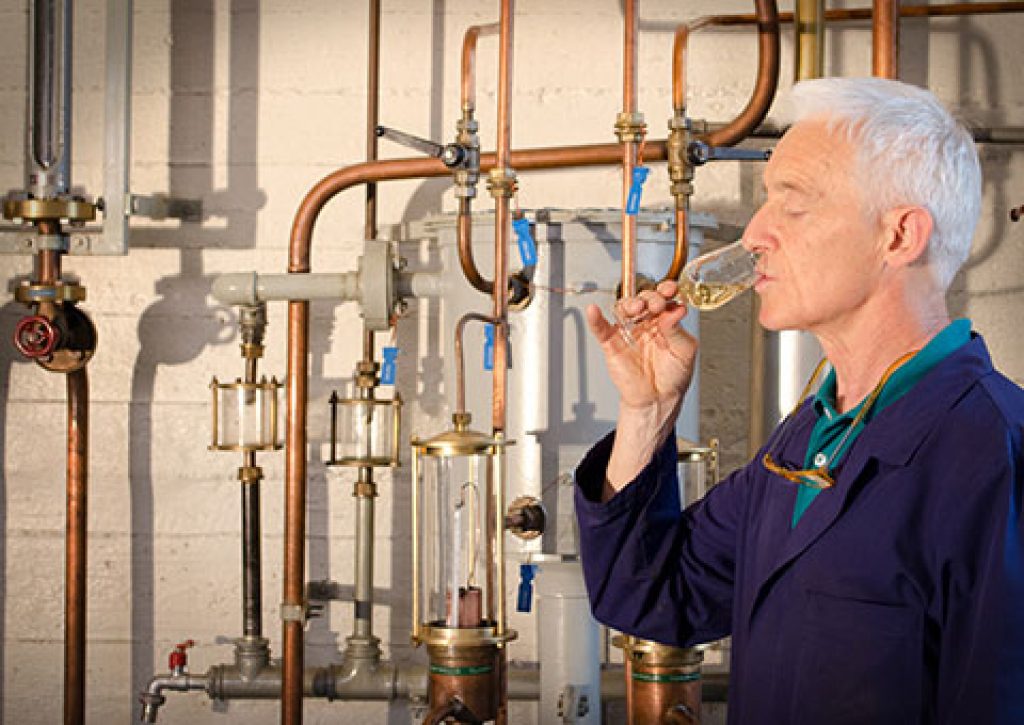
COME SERVIRE E DEGUSTARE LE GRAPPE REVEL CHION
Non possiamo permetterci l’omologazione, non possiamo promettere di darvi grappe sempre uguali. Dai nostri avi abbiamo imparato ad amare la natura, ad amare le diversità che essa induce nelle cose come fonte di ricchezza.
Al nostro alambicco chiediamo solamente di eseguire fedelmente, in base ai nostri comandi, una blanda selezione di quanto la natura ha prodotto sui filari prima e in cantina poi. Per questo vi chiediamo di assaggiare con attenzione le nostre grappe valutando l’aspetto adamantino in quelle bianche e il cristallino dorato che distingue le invecchiate. Apprezzatene il profumo, a volte un po’ ribelle, altre più suadente, ma sempre carico di mille note raffinate che riportano ai vigneti d’autunno e al bollire del mosto che si fa vino.
Centellinate schiacciando il sorso con la lingua per percepire l’ardore che subito manifestano e, in rapida successione, il ricco aroma che invade la bocca e a lungo vi permane. Per fare tutto questo utilizzate un calice di cristallo o, al massimo di sonoro vetro sottile, non troppo grande, ma neppure troppo piccolo: sui 120 ml è la misura giusta. Un calice, per avere uno stelo che mantenga il liquido lontano dalla vostra mano, racchiuso in un tulipano dove gli aromi giocano a nascondino sul liquido prima di giungere più concentrati – ma non molto – al vostro naso; il cristallo o il vetro sonoro per la coerenza con l’immaterialità di ciò che state assaporando.
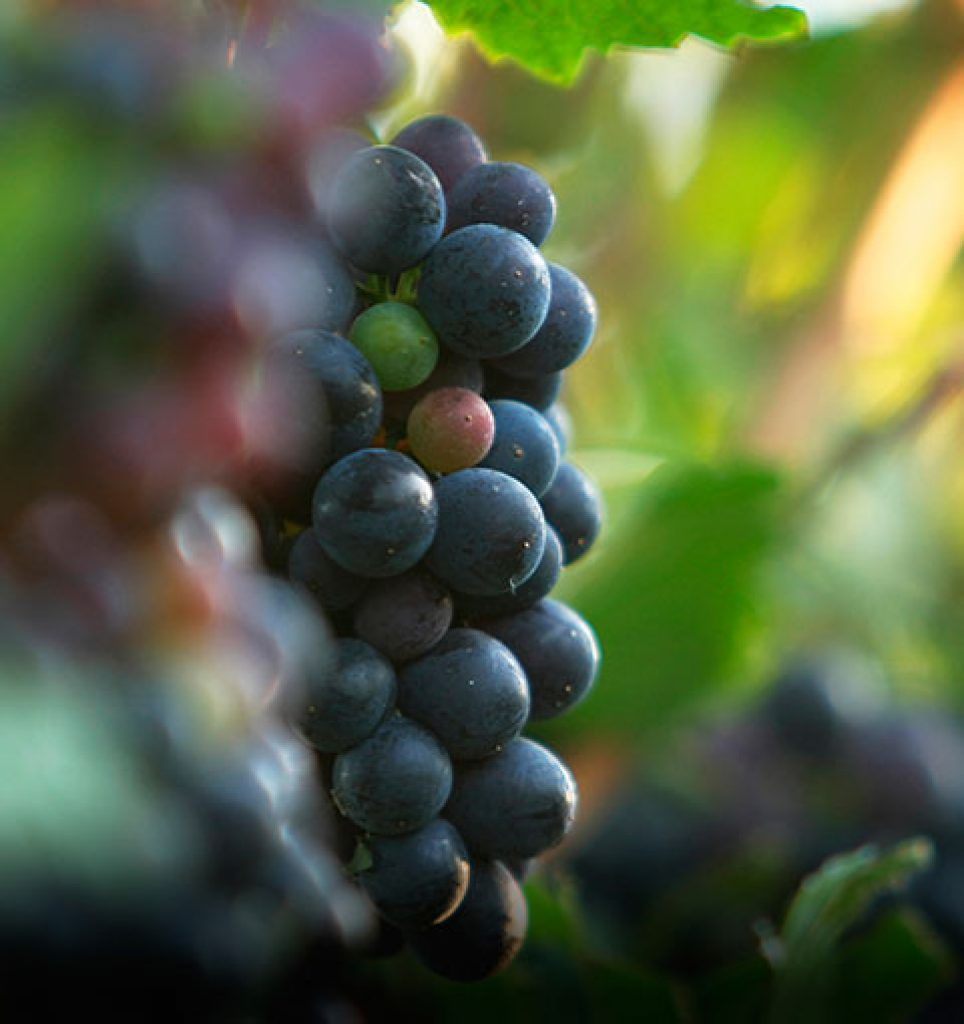
E fate attenzione alla temperatura: le acqueviti hanno conosciuto i rigori del fuoco e amano il fresco, a volte il freddo degli inverni delle nostre valli.
Per metterla in gradi centigradi, non più di 18 per la grappa invecchiata, tra i 10 e i 12 per le grappe giovani.
In genere la grappa ama essere sorseggiata tutta sola, anche se si è in buona compagnia, ma se volete accompagnarla con qualcosa di Chiaverano, per provare un brivido insolito, provate a sposarla con il tomino piccante, meglio se spalmato sul pane e fatto poi liquefare al calore della brace ardente.


